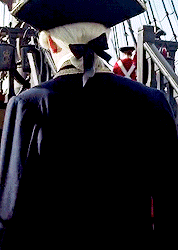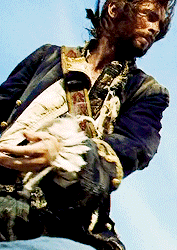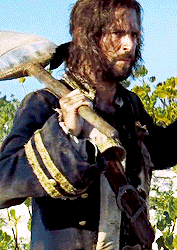"My duty is to serve King and Country. If you've nothing useful to contribute, kindly turn your sails to windward and head for more... abiding waters."
Last active 60 minutes ago
Don't wanna be here? Send us removal request.
Text




JACK DAVENPORT as JAMES NORRINGTON ↳ PIRATES OF THE CARIBBEAN: THE CURSE OF THE BLACK PEARL (2003)
188 notes
·
View notes
Text

Who else at this very moment would literally THROW themselves on top of him to protect him?
25 notes
·
View notes
Photo






POTC Meme || Outfits (2/8)
James Norrington’s UTILITY UNIFORM from Pirates of the Caribbean: The Curse of the Black Pearl (2003) and Pirates of the Caribbean: Dead Man’s Chest (2006) dir. Gore Verbinski
Costume Designer: Penny Rose
1K notes
·
View notes
Text
Finally watching Black Sails... is it just me, or does Flint give off some serious pirate-James/Scruffington vibes?
0 notes
Photo

The Golden age of Piracy, 17th-18th century.
608 notes
·
View notes
Text

Oh? What's this?? ANOTHER picture of SCRUFFINGTON!?
4 notes
·
View notes
Text
Daily Writing Challenge
Write 5 sentences for your WIP right now. (x)
Imagine a place where you would like to be and write about what you would do there. (x)
What are your OCs pet peeves? (x)
Write a 10 sentence long short story about the object next to you. (x)
Write a summary for a book you would love to read. (x)
Write down 10 words that describe your MC. (x)
Write a micro story about an unusual love. (x)
Explain your MCs motivation in 3 sentences. (x)
Write a poem about an empty house. (x)
Write a 5 sentence long short story from three different perspectives. (x)
What nicknames does your MC have and who gave them to them? (x)
Write a new piece of lore for your WIP. (x)
Write a micro story about someone saying "thank you". (x)
Write about one your OC's tattoos or someone getting one done. (x)
What do you admire about your MC? (x)
Write the dialogue for a scene that's been on your mind. (x)
Write a road trip scene. (x)
Write about your MCs favourite outfit. (x)
Write about something that you can see from your window. (x)
Write about a normal day in your MC's life. (x)
Write 100 words today. It doesn't matter about what. (x)
Write a funny scene. (x)
Write down everything on your mind for five minutes. (x)
Write about your OC's first meeting. (x)
Write a scene in a grocery store. (x)
Write a micro story about an artist and their muse. (x)
Write an end scene, without the beginning. (x)
Write 10 sentences for your WIP right now. (x)
If you like my blog and want to support me, you can buy me a coffee or become a member! And check out my Instagram! 🥰
3K notes
·
View notes
Text
Votes are in! Long chapters it is! I'll make them as long as I can! XD
6 notes
·
View notes
Note
My dear James... I need to know you're alright; that you are alive and well. Please ease my torment!


Have we even met?
3 notes
·
View notes
Text
youtube
I've been listening to this all night whilst working on my fanfic. I think it is coming along quite nicely! Once I am a few more chapters in, I plan to start posting. I will provide updates on its progress!
0 notes
Text
6 notes
·
View notes
Text
It brings me so much joy when I open pinterest and it immedietaly serves me a brand new picture I haven't seen before of a character I'm currently obssesed with
19 notes
·
View notes
Photo

The way of a ship in: China tea clippers, by George Frederick Campbell 1954
Rolling: When the ship turns around her longitudinal axis so that she leans to the left or right, this movement is called rolling.
Pitching: The movement of a ship in which she dips alternately bow and stern into the depression of the sea.
Heeling: Once she leans to one side, she also turns along her longitudinal axis.
Pooped: The Sea breaks over the stern
Nose diving: She dives deep into the sea with her bow
Tossing: Constantly tossing back and forth or moving up and down
Yaw: She turns on her vertical axis so that the bow moves back and forth between port and starboard; this movement is called yawing.
617 notes
·
View notes




















